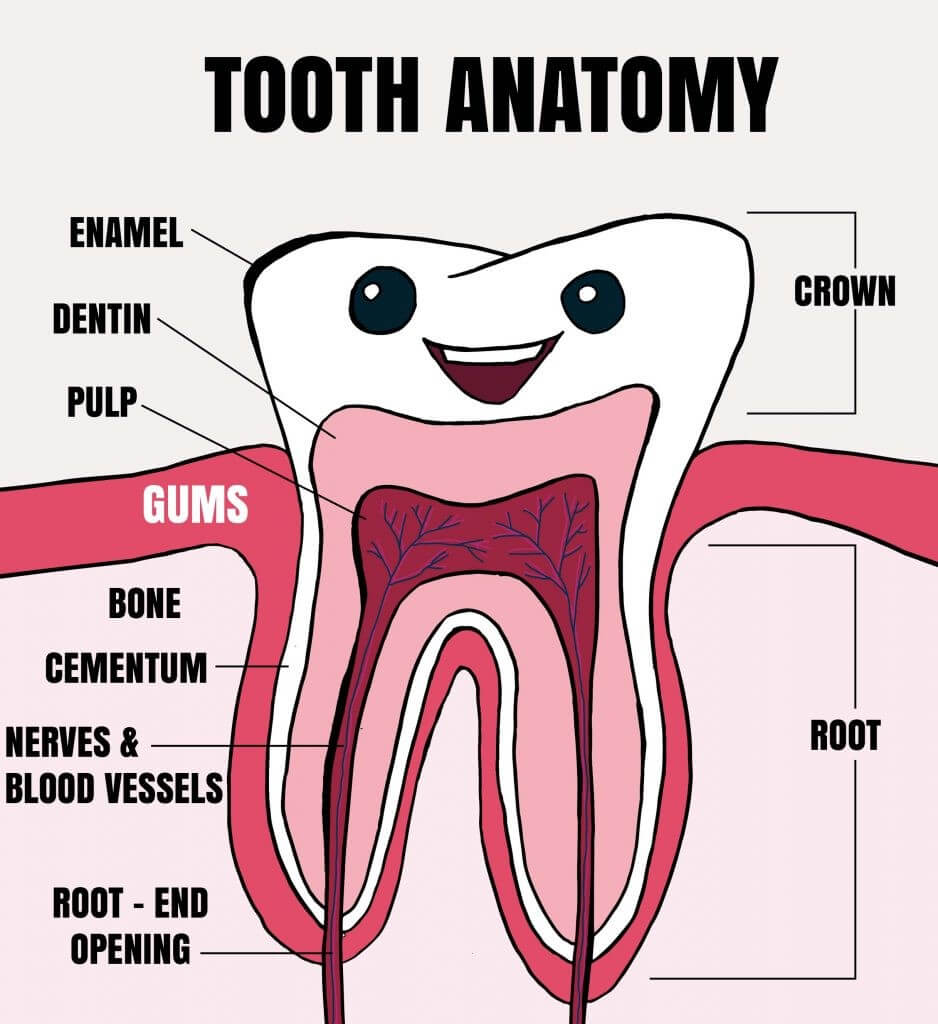Tooth Anatomy
Teaching kids how to clean their teeth and what to eat for healthy teeth are very important for oral health. But, knowing how all the different parts of your teeth function can provide insight into why you are cleaning your teeth the way you do. Teaching your kids tooth anatomy will help them understand that teeth are more than hard white chiclets in their mouths, and how practicing proper oral hygiene will protect these complex parts of their bodies.

Tooth Anatomy Breakdown
- Crown: The top area of the tooth that is covered with enamel.
- Enamel: It’s the white outer part and is the hardest part of the tooth.
- Dentin: The dentin, which is between the enamel and the cementum, is less mineralized than the enamel and less brittle. It acts as another level of protection for the pulp, and support for the crown.
- Pulp: The soft inner part of the tooth. It contains blood vessels, connective tissue, and nerves. One of the pulp’s most important functions is to provide moisture and nutrients to the surrounding mineralized parts of the tooth.
- Gums: This is the soft tissue that covers the jaw and protects the roots of the tooth. The gums also cover and protect teeth that are forming and have not yet erupted.
- Root: The area of the tooth that lies beneath the gums, and should not be visible.
- Cementum: The cementum is the layer of hard connective tissue that covers the root. This layer is softer than the dentin and the enamel but still acts as a bone like a protective layer.
- Nerves and Blood Vessels: Located in the pulp and run through the tooth in the root canal.
- Root-End Opening: Blood vessels and nerves enter the tooth through this opening at the apex of the root.
Tooth anatomy can be fun and so can dental health! There are books, apps, and more to get kids involved. You can also find fun activity sheets on mouthhealthy.org.
Share